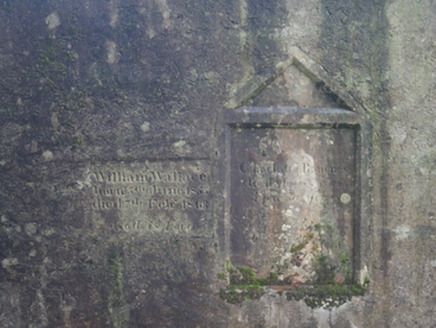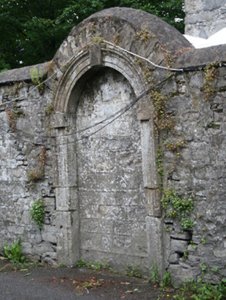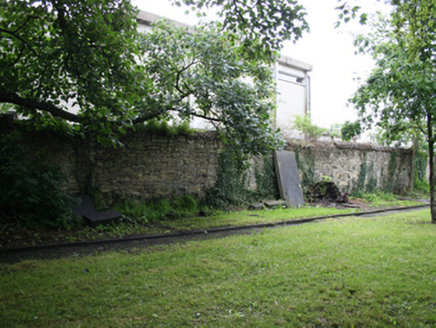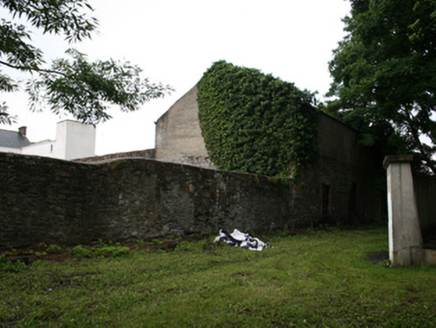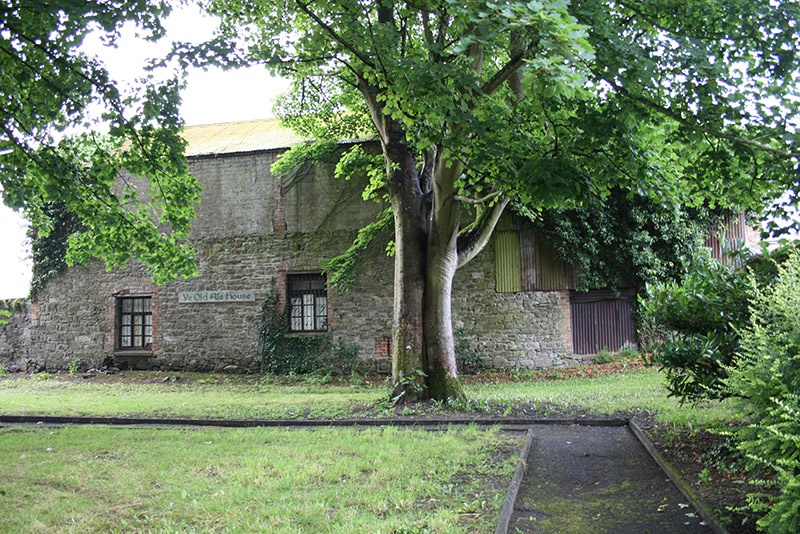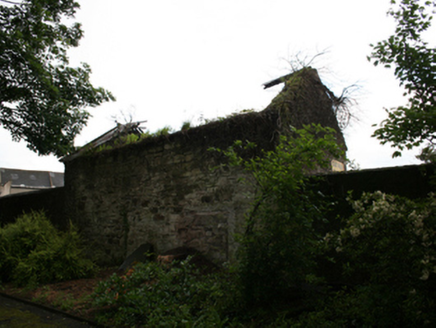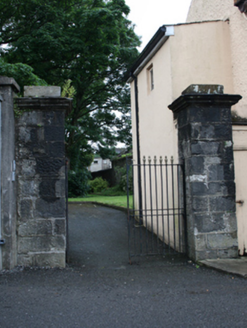Survey Data
Reg No
40000331
Rating
Regional
Categories of Special Interest
Archaeological, Architectural, Historical, Social
Previous Name
Francisan Abbey
Original Use
Abbey
Historical Use
Church/chapel
In Use As
Park
Date
1430 - 1470
Coordinates
241915, 304764
Date Recorded
15/06/2012
Date Updated
--/--/--
Description
Freestanding enclosure walls of former Franciscan abbey, commenced c.1450. Retaining door opening c.1740 and rear elevations of two houses c.1850 and freestanding remains of church tower adjacent to western wall. Now enclosing public park. Coursed rubble limestone walls with rendered coping. Carved limestone door opening of c.1740 incorporated into west boundary wall adjacent to tower with ashlar archivolt, keystone and springing stones, now blocked up. Burial ground located within walls with some surviving gravemarkers, many moved from their original position and some incorporated into boundary wall. Memorial created from gravemarkers located in centre of burial ground. Square-profile limestone piers with carved stone cornice and later double gates of wrought-iron with cast-iron finials.
Appraisal
Along with the abbey tower, these enclosure walls are the last surviving remains of one of the most important buildings in the medieval history of Cavan town. The use of the abbey as a burial ground and subsequent parish church are indicative of the often layered history of religious sites. The range of gravestone inscriptions is a valuable source for the political and social history of the town. The grave of Owen Roe O’Neill (c.1590–1649), the celebrated general in the Irish Confederate War, adds to the historical importance of the site. The fine door opening that is preserved in the west wall, as well as the handsome entrance gates are important eighteenth-century features. The former abbey grounds continue to play an important social role in Cavan town and make a significant contribution to its layered architectural landscape.
